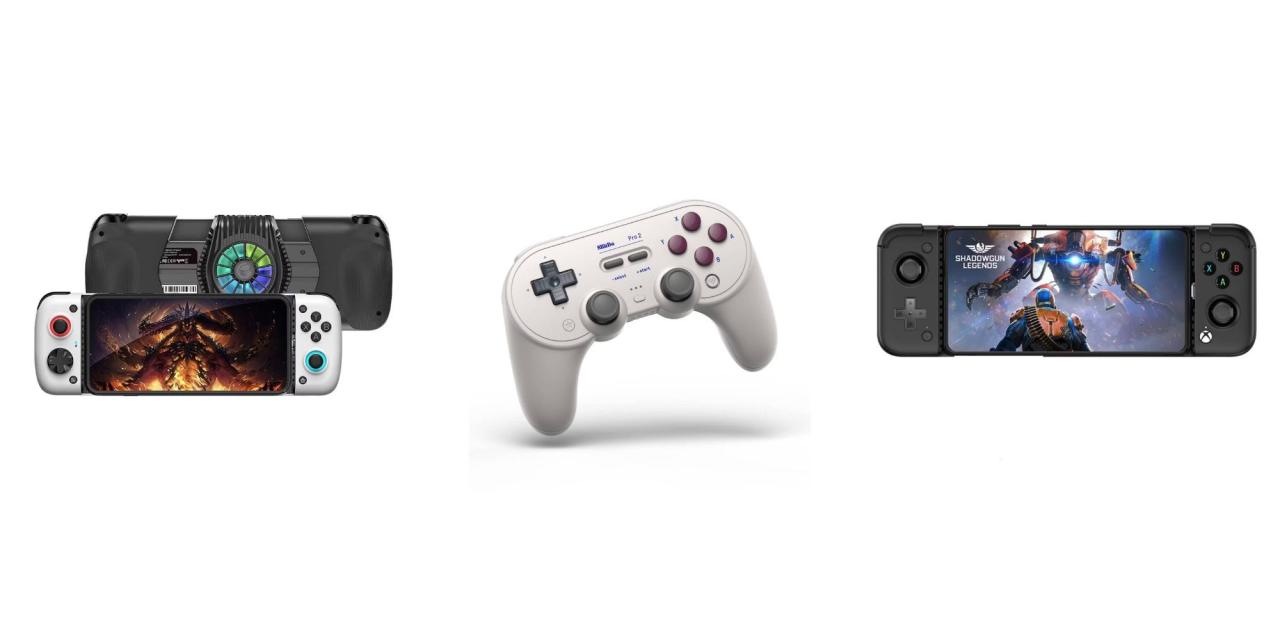How to Use Controllers for Mobile Gaming is a topic that has gained significant traction as mobile gaming continues to evolve and expand. With the rapid advancements in technology and the increasing complexity of mobile games, players are seeking ways to enhance their gaming experience. Utilizing controllers can provide a competitive edge, improve precision, and create a more immersive gameplay environment, making it essential for both casual and serious gamers alike.
The integration of controllers into mobile gaming not only simplifies controls for complex games but also brings a familiar layout that many gamers are accustomed to from console or PC gaming. This introduction sets the stage for exploring the various types of controllers available, their compatibility with different mobile devices, and the steps necessary to set them up for an optimal gaming experience.
The modern era is characterized by rapid technological advancements that have fundamentally transformed various aspects of human life. From communication to transportation, technology has permeated every facet of society. In this article, we will explore the profound impact of technology on society, focusing on three primary dimensions: communication, education, and healthcare. We will delve into specific examples, the benefits and drawbacks of these technological innovations, and the future implications for society as a whole.The advent of the internet has revolutionized communication, enabling instantaneous connections across the globe.

Social media platforms like Facebook, Twitter, and Instagram have redefined how we interact with one another, allowing for the sharing of ideas, experiences, and cultures at an unprecedented scale. According to a report by the Pew Research Center, as of 2021, approximately 72% of American adults used at least one social media site, highlighting the pervasive reach of these platforms.
However, while social media fosters connectivity, it also raises concerns about privacy, misinformation, and mental health. The spread of fake news is a significant issue, with algorithms often amplifying sensational content over factual information. This phenomenon can lead to polarized opinions and a fractured public discourse, where individuals are more likely to engage with information that reinforces their existing beliefs rather than challenging them.
A study published in the journal “Science” found that misinformation spreads faster and more broadly than accurate information on social media, compounded by the fact that emotionally charged content tends to attract more attention. Moreover, the impact of technology on communication extends beyond social media. Email, video conferencing tools like Zoom, and instant messaging applications such as WhatsApp have transformed professional environments.
The COVID-19 pandemic accelerated the adoption of remote work technologies, making virtual collaboration the norm rather than the exception. According to Gartner, a leading research and advisory company, 47% of organizations plan to allow employees to work remotely full-time post-pandemic. This shift has profound implications for work-life balance, productivity, and even urban planning, as the need for physical office spaces may diminish.The educational landscape has also undergone a significant transformation due to technological advancements.
E-learning platforms like Coursera, Udemy, and Khan Academy have democratized access to education, allowing individuals from diverse backgrounds to learn at their own pace. A report by the Brookings Institution highlights that online learning not only provides flexibility but also enhances student engagement through interactive content. Furthermore, technology can bridge the gap for underserved communities by providing access to quality educational resources that they might not otherwise have.However, the digital divide presents a significant challenge.
While some students thrive in online environments, others lack the necessary resources, such as high-speed internet or access to devices, to participate fully. A study conducted by the National Education Association found that approximately 17% of students in the United States lack access to the internet at home, which can hinder their ability to complete assignments and engage with peers.
Therefore, while technology has the potential to enhance education, it is crucial to address these disparities to ensure that all students can benefit from these innovations.In addition to communication and education, the realm of healthcare has experienced substantial technological advancements that have transformed patient care and treatment options. Telemedicine, wearable health technology, and electronic health records (EHRs) are just a few examples of how technology has reshaped the healthcare landscape.
Telemedicine allows patients to consult with healthcare providers remotely, which can improve access to care, especially for those in rural areas or with mobility challenges. A study published in the “Journal of Medical Internet Research” found that telemedicine consultations can lead to higher patient satisfaction and improved health outcomes.Wearable health technology, such as smartwatches and fitness trackers, empowers individuals to monitor their health metrics, such as heart rate and activity levels, which can lead to proactive health management.
The global wearable technology market is projected to reach $62 billion by 2025, reflecting the growing interest in personal health monitoring. However, concerns regarding data privacy and security persist, as the collection and storage of sensitive health information pose risks if not adequately protected.The integration of EHRs has streamlined patient information management, allowing healthcare providers to access comprehensive patient histories quickly.
This technology improves coordination of care and reduces the likelihood of medical errors, ultimately enhancing patient safety. Nevertheless, the transition to EHR systems has not been without challenges, including interoperability issues and the potential for data breaches.As we reflect on these technological advancements, it is essential to consider their implications for the future. The intersection of technology and society presents both opportunities and challenges.
On the one hand, technology has the potential to foster greater connectivity, enhance educational access, and improve healthcare outcomes. On the other hand, issues such as misinformation, the digital divide, and privacy concerns must be addressed to mitigate the adverse effects of these innovations.To navigate this complex landscape, it is imperative for policymakers, educators, and healthcare professionals to collaborate in creating frameworks that promote responsible technology use.
For instance, digital literacy programs can equip individuals with the skills needed to critically evaluate information online and navigate the digital world safely. Furthermore, efforts to expand internet access in underserved communities are essential to ensuring equitable educational opportunities.In the healthcare sector, ongoing discussions about data security and patient privacy must remain a priority. As technology continues to evolve, regulatory frameworks should adapt to address emerging risks while fostering innovation.
The potential of artificial intelligence (AI) and machine learning in healthcare offers exciting prospects for personalized treatment and predictive analytics, but ethical considerations must guide their implementation.In conclusion, the impact of technology on society is profound and multifaceted. As we continue to embrace technological innovations, it is crucial to strike a balance between leveraging their benefits and addressing the challenges they pose.
By fostering a culture of digital literacy, promoting equitable access, and prioritizing ethical considerations, we can harness technology’s potential to create a more connected, informed, and healthier society. The journey ahead is fraught with complexity, but with collaborative efforts and thoughtful engagement, we can navigate the future of technology in a way that serves the greater good.




